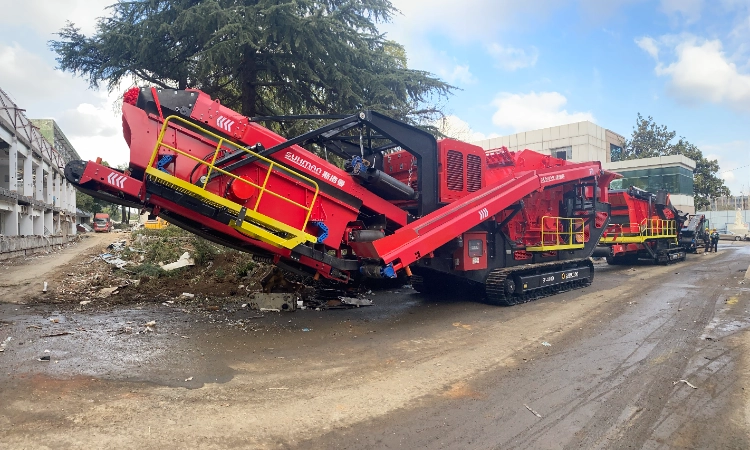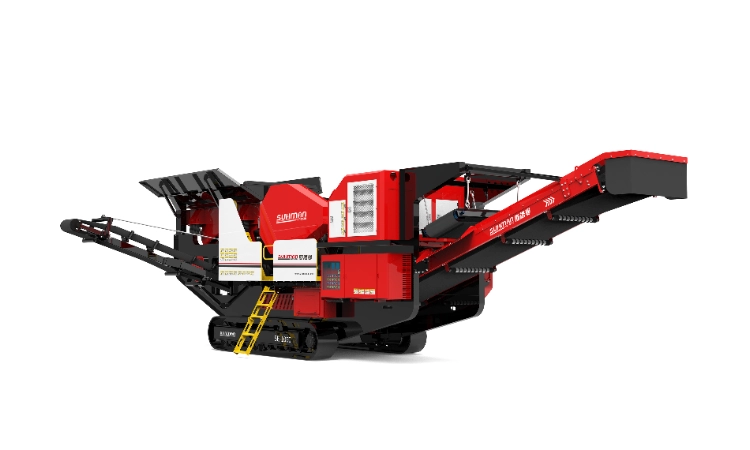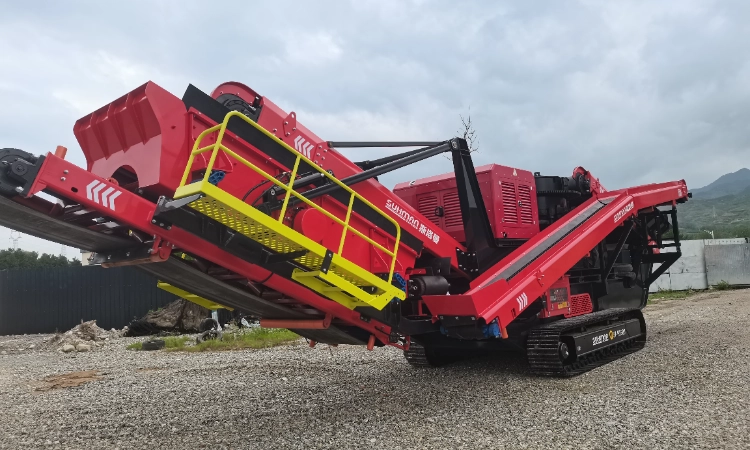7 Differences Between Jaw Crusher and Impact Crusher
Release time: 2025-03-01
1. Working Principle
- Jaw Crusher: It crushes materials through the relative movement between the movable jaw plate and the fixed jaw plate. The movable jaw plate approaches and moves away from the fixed jaw plate periodically. When the movable jaw plate gets close to the fixed jaw plate, materials are crushed by extrusion, splitting, and bending. Once the movable jaw plate moves away, materials that have been crushed to a size smaller than the discharge opening are discharged.
- Cone Crusher: It makes use of the eccentric movement of the cone. The mantle moves towards the concave, squeezing the materials. Materials in the crushing chamber are crushed under continuously changing extrusion and bending forces. Meanwhile, due to the rotation of the cone, materials also have a certain circular motion, resulting in a more uniform crushing effect.

2. Structural Features
- Jaw Crusher: It has a simple structure, mainly composed of components such as the frame, movable jaw, fixed jaw, eccentric shaft, and toggle plate. Its crushing chamber is V - shaped, with a large feed opening and a small discharge opening, enabling it to handle large - sized materials.
- Cone Crusher: Its structure is relatively complex, mainly consisting of the frame, main shaft, moving cone, fixed cone, eccentric sleeve, transmission device, etc. The crushing chamber of a cone crusher is an annular space formed by the moving cone and the fixed cone, and materials are crushed in this annular space.
3. Applicable Materials
- Jaw Crusher: It is suitable for materials of various hardness levels. It is especially good at handling hard and large - sized materials, such as granite, basalt, iron ore, etc. It is widely used in the primary crushing stage of mining.
- Cone Crusher: It is suitable for medium and fine crushing of materials of various hardness levels. It has a better crushing effect on medium - hard and above - medium - hard materials, like limestone, quartzite, sandstone, etc. It is often used in the medium and fine - crushing links of mining and construction aggregate production.
4. Product Particle Size
- Jaw Crusher: Usually, it is used for primary crushing, and the product particle size is relatively large. The particle size of the discharged materials can be adjusted by changing the discharge opening size, generally ranging from several tens of millimeters to over one hundred millimeters.
- Cone Crusher: As a medium - and fine - crushing equipment, it can produce finer product particle sizes. The final product particle size can be well - controlled according to different models and operation parameters, usually in the range of a few millimeters to tens of millimeters, which is more suitable for producing materials with specific particle - size requirements.
5. Production Capacity
- Jaw Crusher: Its production capacity varies according to different models. Generally, small - sized jaw crushers have a relatively low production capacity, while large - sized ones can reach a relatively high production capacity, usually ranging from several tons per hour to several hundred tons per hour.
- Cone Crusher: Also, its production capacity depends on the model. In general, cone crushers can achieve a relatively high production capacity in medium - and fine - crushing operations. High - end and large - sized cone crushers can have a production capacity of several hundred tons per hour, which is very suitable for large - scale production scenarios.
6. Wear and Maintenance
- Jaw Crusher: The main wearing parts are the jaw plates. Due to the simple structure, the replacement and maintenance of wearing parts are relatively easy. However, during the operation, due to the large impact force on the jaw plates, the wear rate is relatively high, and regular inspection and replacement of jaw plates are required.
- Cone Crusher: The main wearing parts include the mantle and the concave. Because of its more complex structure, the maintenance work is relatively more difficult. But the wear of its wearing parts is relatively more uniform, and with proper operation and maintenance, the service life of wearing parts can be extended.
7. Application Scenarios
- Jaw Crusher: Besides the primary crushing in mining, it is also widely used in the pre - processing of building materials, metallurgy, and chemical industries. For example, in a construction waste recycling plant, it can be used to break large - sized waste concrete and bricks into smaller pieces for subsequent processing.
- Cone Crusher: In addition to being used in the medium - and fine - crushing of mines and construction aggregate production, it is also often used in the production of high - quality sand and gravel in the water conservancy and hydropower industry, as well as in the production of refractory materials, where its ability to produce fine and uniform - sized particles is highly valued.
| Difference Dimension | Jaw Crusher | Cone Crusher |
|---|---|---|
| Operating Principle | Utilizes a reciprocating motion of the jaw to compress and crush material between a fixed jaw and a moving jaw | Employs a rotating cone that compresses material against a fixed bowl, causing it to fracture and break |
| Application Scope | Primarily used for primary crushing, reducing large rocks or ore to manageable sizes | Often used for secondary or tertiary crushing, further refining the particle size of the crushed material |
| Crushing Force | Generally applies a compressive force to break material, suitable for harder and more abrasive materials | Also applies compressive force but can be adjusted for finer crushing and better shape control |
| Output Particle Size | Typically produces a wider range of particle sizes, suitable for initial size reduction | Capable of producing more consistent and finer particle sizes, ideal for specific applications requiring precise sizing |
| Maintenance and Wear | Jaw plates may require frequent replacement due to wear and tear from crushing hard materials | Wear parts, such as the cone and bowl liners, also experience wear but may have longer service life due to adjustable crushing gap and better material distribution |
| Energy Efficiency | May consume more energy per ton of material crushed due to the nature of the jaw motion and the force required to crush hard materials | Often more energy-efficient for finer crushing, as the cone design allows for more efficient material compression and less energy loss |
| Cost | Generally has a lower initial cost compared to cone crushers, but may have higher operational costs due to more frequent maintenance and wear part replacements | Typically has a higher initial cost but may offer lower operational costs over time due to higher efficiency and longer wear part life |
When choosing between Jaw Crusher and Cone Crusher for processing different types of stones, it is important to consider the hardness, abrasiveness, moisture content, and required crushing stages of the stones. Jaw crushers may be more suitable for primary crushing stages and handling a wide range of stone types, while cone crushers may offer better performance in terms of particle size control, energy efficiency, and wear resistance, particularly in secondary and tertiary crushing stages. Additionally, factors such as maintenance costs, ease of operation, and environmental impact should also be taken into account when making a decision.



